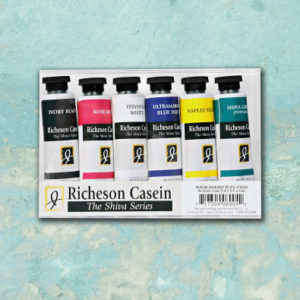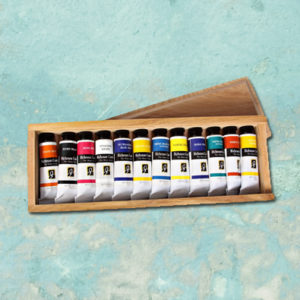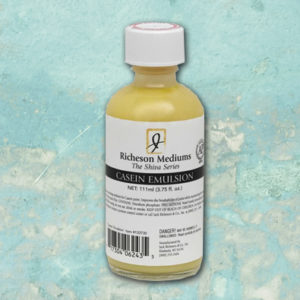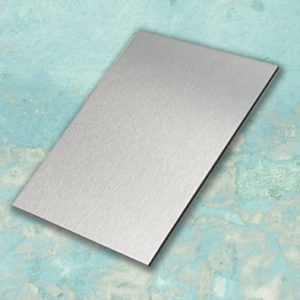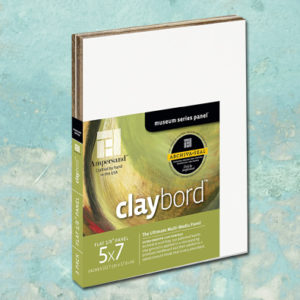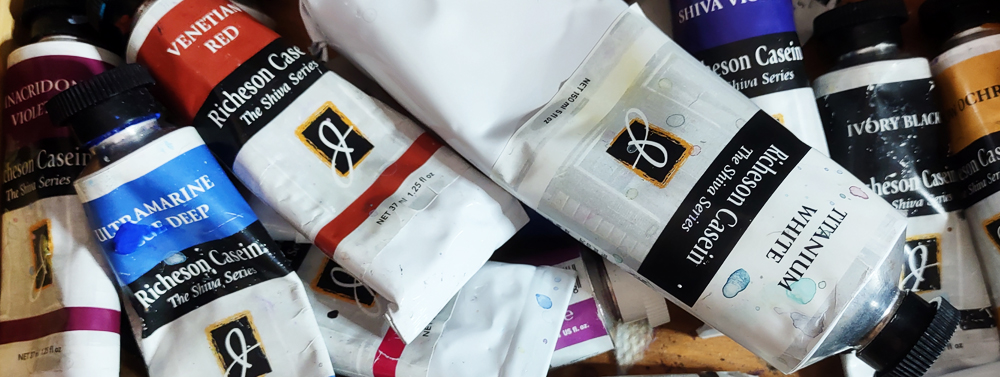
Casein Paint
Casein paint is one of my favorite paints these days. I have mostly replaced my gouache with this milk based water soluble paint. It’s a lot like gouache except for that cures after some time and becomes moisture resistant. This makes it easier to layer. Layering is always part of any of my artworks as it gives them depth. Casein also feels a little thicker than gouache, even when watered down. Jack Richeson makes an artist grade line of casein and that is what I use since the only alternative really it to make it yourself from dairy product or casein powder. I’ll try that some day but this Shiva line is overall really good as well as convenient as it available at most fine art supply stores or Amazon.
With gouache, it’s easy to disturb a paint layer that you’ve already made if you try to paint on top of it since gouache always remains water soluble. With casein, after it’s cured you can put a very wet wash layer on and your previous layers and it will remain undisturbed (as long as you don’t scrub), something which is completely impossible with gouache. That opens up some interesting technique possibilities for me. Curing time varies. Here in the dry desert climate it usually takes a few days to a week to really get water resistant. You don’t have to wait that long every time you want to work on it though if you want to treat it more like a gouache (knowing that if you paint really wet it will disturb the under layer). Sometimes you want that!
The finish is very velvety and matte. I’m likely to varnish it glossy if it’s a piece that I think would benefit greatly from more contrast particularly in the darks. When it cures, it’s very durable and will not scratch easily . To increase sheen and durability on an unvarnished casein painting, you can buff it with a soft dry cloth every now and then. Casein is one of the most stable, long lasting paints there is. Many cave paintings and ancient artworks were painted in casein since it is milk based which is a substance humans have always have had access to since we’re mammals (earliest casein paints were made with human milk!).
It’s also mixable with watercolor and gouache and most other watermedia (acrylic for example, though I don’t know much about that one). This can be nice because Shiva’s line (the only line there is really of artist grade casein) is pretty limited so it’s nice that you can modify your colors with other types of paint. You can also buy the binder for casein, which you can mix with pigments to make any color you want.
Another great feature about casein is that you can erase with ease! Always nice if you are attracted to perfectionism or if you like to work things out by trying this and that in your painting as you go. If the paint has not cured, water will likely be enough to erase dry paint. Once it’s been dry for a few weeks, it may require a solution of 1 parts ammonia to 9 parts water and a bit of scrubbing to remove paint.
What’s best to paint on? You can paint on paper (it’s an excellent paint for sketchbook as it doesn’t dry sticky like acrylic can). Just note, if you apply it too thick on paper it can crack. I do many layers so to stay safe I always paint on a rigid surface like a Masonite or aluminum panel. I always gesso it with an acrylic gesso when I paint on an Aluminum Panel, Ampersand – Claybord is another great option and it requires no prep.
As far as paintbrushes go, I really like my Chinese paint brushes as well as golden taklons that are fairly on the medium/stiff side. I avoid watercolor brushes except for when I’m heavily watering casein down. It’s a thick paint. It’s not good to let the paint dry in the brush, however it doesn’t kill the brush the way acrylic does. A soak in water or the 1 part ammonia, 9 part water solution previously mentioned will help if it has been dry for a while. You’ll have to work it a fair bit but I find I can usually get them mostly back to good working order.


